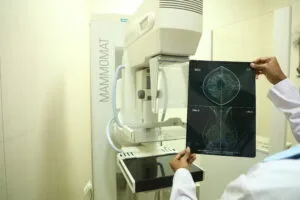How reliable are COVID-19 PCR Results? (Suburban Medical Journal)

In the case of COVID-19 testing (or any yes/no test for that matter), there are 4 possible outcomes:
- True positive: A person with COVID-19 tests positive for COVID-19
- False positive: A person without COVID-19 tests positive for COVID-19
- False negative: A person with COVID-19 tests negative for COVID-19
- True negative: A person without COVID-19 tests negative for COVID-19
While 1 and 4 are the desirable outcomes, 2 & 3 are not. They represent testing errors.
Sensitivity (aka true positive rate) is a measure of the ability of a test to detect the true positive cases.
Specificity (aka true negative rate) is a measure of the ability of a test to detect the true negative cases.
So, let’s look at the possible scenarios that may arise with one time or repeat/consecutive/serial testing of COVID-19 by PCR.
POSITIVE RESULT:
As mentioned, a positive result can be a TRUE POSITIVE or a FALSE POSITIVE. A false-positive result may lead to:
- Unnecessary treatment of uninfected individuals.(1)
- May also cause enormous societal problems when attributed to people working in essential public services (health and social care operators, police officers, firefighters and so forth), as it might undermine the workforce available for facing the emergency.(1)
So, how should we interpret a positive result?
- PCR tests for COVID-19 are highly specific because they are based on detecting unique genetic sequences of SARS-CoV-2. Multiple separate sequences are used in the test (with at least one screening and one confirmatory sequence). In addition, a control sample is also run with each batch of tests.
- Given the precautions taken, the high specificity of the tests and the dearth of available literature on false positives, if a test comes back positive, you can be fairly confident that there was SARS-CoV-2 viral RNA in the sample collected from the patient.
NEGATIVE RESULT:
A negative result can be a true negative or a false negative.
False negatives pose a higher danger than the false positive in a situation like the COVID-19 pandemic.
- A false-negative result of a patient who is infected may contribute to human-to-human transmission and further spread the virus within the community.(1)
So, how should we interpret a negative result?
- A number of factors could lead to a negative result in an infected individual, including:
- Type of sample – while lower respiratory samples like BAL fluid have an estimated false negative rate of ~7%, upper respiratory samples like nasal swabs have an estimated false negative rate of ~37%.(2)
- Insufficient or inadequate material.(1,3)
- The sample was collected too early or late in the infection.(3)
- Too early: In the initial phase of infection, when the patient is still completely asymptomatic or only mildly symptomatic. Virus shedding may have already initiated during this period, thought its extent would probably be too low to be identified.(1)
- Late: The tail of SARS-CoV-2 infection, when there is symptom relief. In this final phase of the infection, virus shedding may still persist, though remaining below the detectable limit.(1)
- The sample was not handled and shipped appropriately.(3)
- Technical reasons inherent in the test, e.g. PCR inhibition.(3)
- Active recombination and mutation: Due to the error-prone RNA dependent RNA polymerases of coronaviruses.
- Shen et al. recently found a remarkable level of viral diversity in some infected patients, accounting for a median number of 4 intra-individual viral variants, which is suggestive of the rapid evolution of SARS-CoV-2.(4)
- In another study, a researcher detected as many as five different SARS-CoV-2 haplotypes, a fact that usually reflects active genetic recombination.(5)
- Use of non-adequately validated assays.(1)
- If a negative result is obtained from a patient with a high index of suspicion for COVID-19 virus infection, particularly when only upper respiratory tract samples were collected, additional samples, including from the lower respiratory tract if possible, should be collected and tested.(3)
FIRST SAMPLE IS NEGATIVE, SECOND/REPEAT SAMPLE IS POSITIVE:
This scenario can occur under the following circumstances:
- The first sample was a false negative – due to any of the reasons mentioned above.
- If the time between the two sample is >5 days, it is possible that the patient was infected in the interim.
FIRST SAMPLE IS POSITIVE, SECOND/REPEAT SAMPLE IS NEGATIVE:
This scenario can occur under the following circumstances:
- If the two samples are taken days apart, then it may be that the viral load has decreased below the detectable limit and the patient is on his way to recovery.
- The second sample may be a false negative – due to any of the reasons already mentioned.
TWO POSITIVE RESULTS ON CONSECUTIVE SAMPLES:
This scenario indicates the patient has a confirmed and ongoing SARS-CoV-2 infection.
TWO NEGATIVE RESULTS ON CONSECUTIVE SAMPLES:
This scenario indicates one of 2 things:
- If the patient was a previously confirmed case of COVID-19, these two negative results indicate that the patient is no longer shedding the virus and may be considered as a recovered/cured patient. However, viral RNA from stool remains detectable for 6-10 days after negative conversion in respiratory swabs.(6,7)
- If this is a new patient with no previous confirmation of the disease, it indicates that the patient does not have COVID-19.
PRACTICAL STEPS TO MINIMIZE ERRORS IN IDENTIFYING COVID-19:
- Try to send samples for testing as close to symptom onset as possible. A recent study indicates that viral shedding is highest on or just before symptom onset.(8)
- Combine COVID-19 PCR testing results with:
- Clinical and epidemiologic evidence (probability of exposure, signs, symptoms, negative diagnostic tests especially for other respiratory illnesses)(1)
- Chest CT (most frequently appear with ground-glass opacities, consolidation with or without vascular enlargement, air bronchogram signs, interlobular septal thickening). As per one recent paper, as many as 93% of all patients whose RT-PCR became positive after an initially negative test result had CT features suggestive of COVID-19. (1)
- Recollect and test upper respiratory samples in patients with negative RT-PCR test results and high suspicion or probability of COVID-19.(1)
- Strictly follow instructions on how nasopharyngeal and oropharyngeal swabs shall be correctly collected, managed and stored.(1)
REFERENCES:
- Lippi G, Simundic A-M, Plebani M. Potential preanalytical and analytical vulnerabilities in the laboratory diagnosis of coronavirus disease 2019 (COVID-19). Clin Chem Lab Med CCLM [Internet]. 2020 Mar 16 [cited 2020 Apr 27];0(0). Available from: https://www.degruyter.com/view/journals/cclm/ahead-of-print/article-10.1515-cclm-2020-0285/article-10.1515-cclm-2020-0285.xml
- Wang W, Xu Y, Gao R, Lu R, Han K, Wu G, et al. Detection of SARS-CoV-2 in Different Types of Clinical Specimens. JAMA [Internet]. 2020 Mar 11 [cited 2020 Apr 8]; Available from: https://jamanetwork.com/journals/jama/fullarticle/2762997
- World Health Organization (WHO). Laboratory testing for coronavirus disease (COVID-19) in suspected human cases [Internet]. Available from: https://www.who.int/publications-detail/laboratory-testing-for-2019-novel-coronavirus-in-suspected-human-cases-20200117
- Shen Z, Xiao Y, Kang L, Ma W, Shi L, Zhang L, et al. Genomic diversity of SARS-CoV-2 in Coronavirus Disease 2019 patients. Clin Infect Dis. 2020 Mar 9;ciaa203.
- Yi H. 2019 novel coronavirus is undergoing active recombination. Clin Infect Dis. 2020 Mar 4;ciaa219.
- Chen Y, Chen L, Deng Q, Zhang G, Wu K, Ni L, et al. The Presence of SARS-CoV-2 RNA in Feces of COVID-19 Patients. J Med Virol. 2020 Apr 3;
- Report of the WHO-China Joint Mission on Coronavirus Disease 2019 (COVID-19) [Internet]. [cited 2020 Apr 17]. Available from: https://www.who.int/publications-detail/report-of-the-who-china-joint-mission-on-coronavirus-disease-2019-(covid-19)
- He X, Lau EHY, Wu P, Deng X, Wang J, Hao X, et al. Temporal dynamics in viral shedding and transmissibility of COVID-19. Nat Med [Internet]. 2020 Apr 15 [cited 2020 Apr 27]; Available from: http://www.nature.com/articles/s41591-020-0869-5



